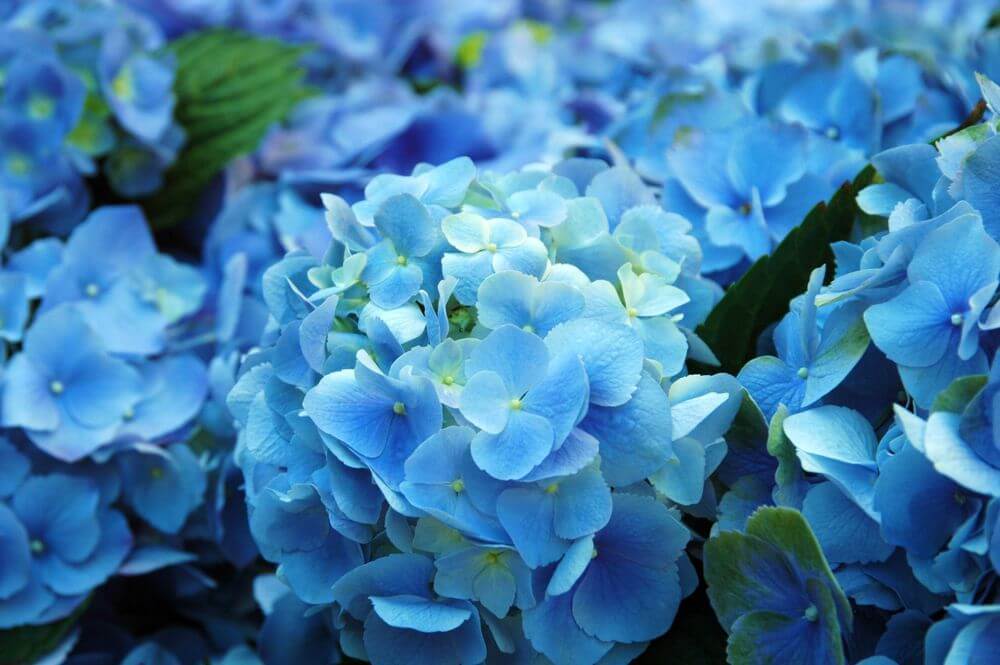Blue flowers are often symbols of delight, intellectuality, and spirituality.
The color blue, known for its calming effect, can aid in relaxation and better sleep.
Light blue shades are often associated with tranquility, while darker blues symbolize confidence.
However, it’s important to note that blue can also represent sadness in some contexts.
Blue flowers are a rare and captivating sight among the world’s floral wonders.
They embody love, positivity, and a sense of calm.
Interestingly, some studies suggest that blue flowers can have a calming effect on the environment, potentially influencing metabolism and appetite.
The subtle hues of these flowers often symbolize trust, compassion, and loyalty, making them a popular choice in gardens and bouquets.
Below is a curated list of some of the most beautiful blue flower names celebrated for their unique colors and meanings.
List Of 30 Beautiful Blue Flowers Names
1. Blue Hydrangea
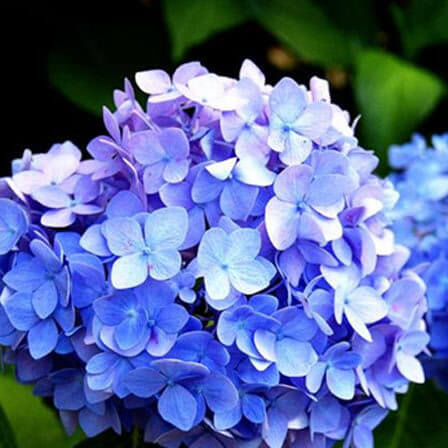
The blue hydrangea is a stunning flower, ranging in shades from soft sky blue to vivid azure.
The soil’s alkalinity influences the color intensity, making each bloom unique.
These flowers are ideal for expressing gratitude, symbolizing heartfelt apology and cool elegance.
Blue hydrangeas are available in deciduous and evergreen varieties and add a touch of serenity to any garden or bouquet.
2. Delphinium
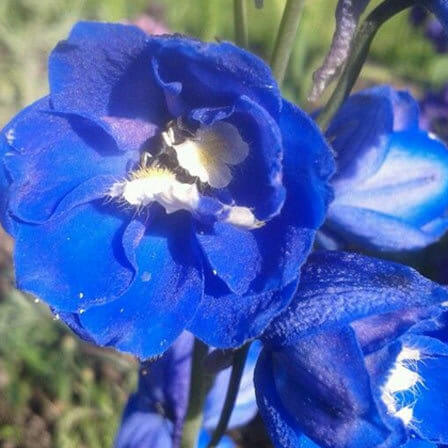
Delphiniums are a spectacular addition to any garden, showcasing a range of blue shades from pale to deep indigo.
Their unique dolphin-shaped blossoms symbolize joy, a generous spirit, and strong bonds.
Delphiniums are popular in ornamental gardening and add vertical interest to summer borders.
They harmonize beautifully with other garden staples like lilies, roses, and geraniums, making them a versatile choice for gardeners seeking to add a touch of blue to their landscape.
3. Dandelion

Traditionally, the dandelion symbolizes affection, love, and desire.
While commonly yellow, a less-known variety features a striking blue hue, embodying happiness, faithfulness, and tranquility.
This flower is deeply rooted in various cultural symbolisms and folklore.
Dandelions, including their blue variants, are widespread, originating from Europe and Asia.
They are known for their robust, grooved stems and can reach impressive heights of up to 1.5 meters.
4. Grape Hyacinth
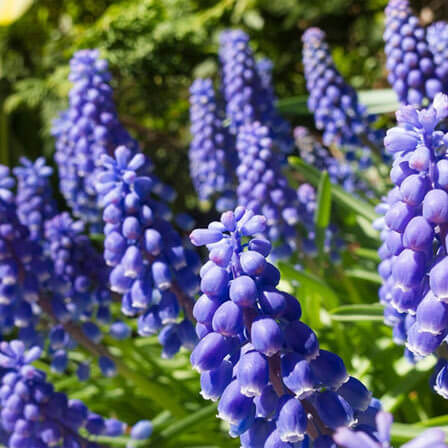
The Grape Hyacinth is a springtime favorite with its distinctive bulbous shape and dense clusters.
While it blooms in various colors, the blue variety is eye-catching, symbolizing trust and reliability.
These flowers also convey a sense of playfulness and joy.
Native to the Mediterranean, they thrive in well-drained, sandy soils and have a wide geographical range, including parts of Europe, the United States, and Northern Africa.
Their adaptability and striking blue hue make them a sought-after choice for gardeners and floral enthusiasts.
5. Clematis
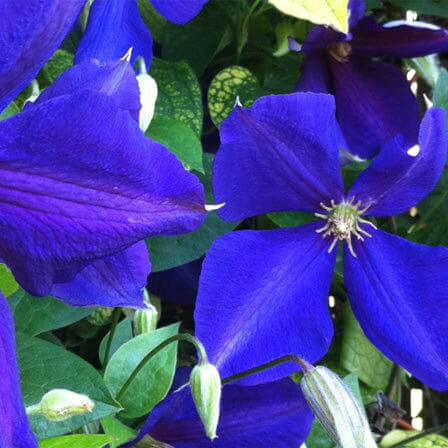
Clematis, known for its striking blue blooms, is a climbing plant widely used for decorative purposes.
Varieties like Crystal Fountain, Arbella, and Ice Blue showcase its diverse beauty.
Symbolizing mental strength, courage, and faithfulness, blue Clematis brings a unique blend of aesthetics and meaning to any garden.
Its woody, climbing vines are initially delicate but grow robust over time.
The leaves, divided into elegant leaflets, add to its ornamental value.
Predominantly found in the temperate zones of the Northern Hemisphere, Clematis thrives in a range of garden settings.
6. Bluestar
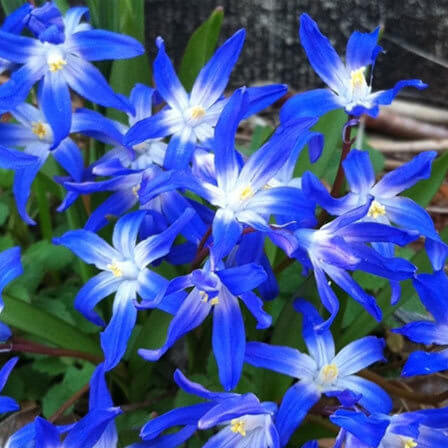
The Bluestar, aptly named for its radiant blue star-shaped blooms, is a garden favorite.
Its clusters of clear blue flowers stand out against the contrasting greenish-yellow foliage, creating a stunning display.
These plants feature narrow, lance-shaped leaves, adding to their elegant appearance.
Symbolizing affection and steadfastness, Bluestars are a true representation of the vibrant blue hue.
Predominantly found across various regions of North America, they are a top choice for adding a touch of true blue to any garden.
7. Bellflower
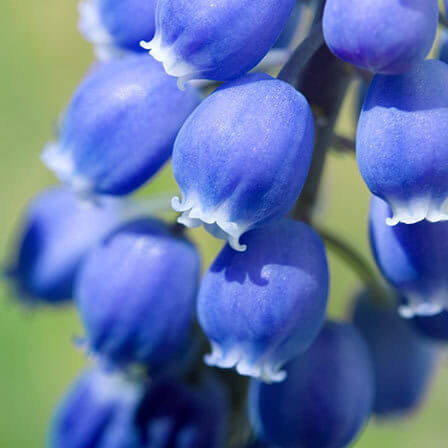
Bellflowers, with their enchanting bell-shaped blooms, come in a spectrum of colors, including a striking deep blue with light yellow centers.
The dark green foliage beautifully complements these cup-shaped flowers.
Bellflowers symbolize gratitude and humility and are a versatile addition to any garden or floral arrangement.
They are widespread, flourishing in temperate and subtropical regions of the Northern Hemisphere, as well as in the Mediterranean and the tropical climates of Asia and Africa.
8. Balloon Flower
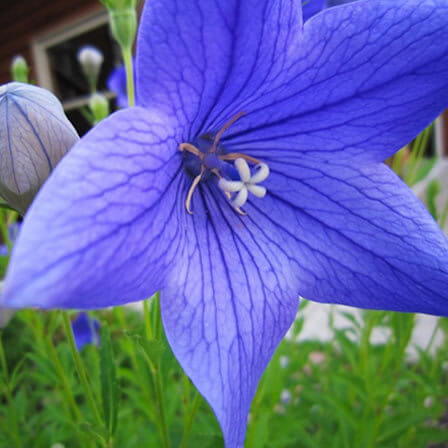
The Balloon Flower is notable for its unique, balloon-shaped buds, opening into star-shaped flowers.
While they come in various colors, the blue variety is especially captivating with its striking red pistils.
These flowers are perfect for adding a decorative touch to gardens or as heartfelt gifts, symbolizing love, obedience, and honesty.
As a perennial, the Balloon Flower thrives in diverse environments, from mountainous areas to fields.
It’s commonly found blooming in Japan, China, and Eastern Siberia, adding a touch of whimsy and color.
9. Aster
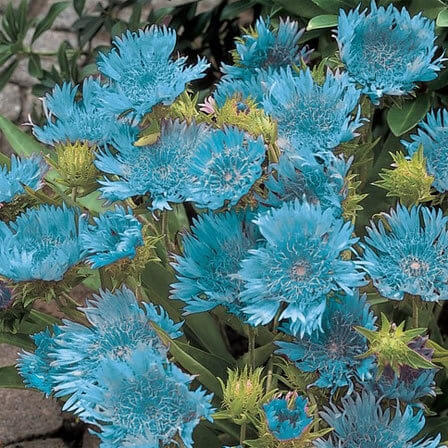
Asters are renowned for their late-season blooming, showcasing a palette of colors, including a captivating blue.
These flowers symbolize love and peace and are associated with healing properties in folklore.
In ancient times, burning aster leaves was believed to ward off evil.
Asters thrive in cool, moist summer climates and are less suited to hot conditions.
Their ability to bloom late in the year makes them an excellent choice for extending the color of your garden through the end of the season.
10. Morning Glories
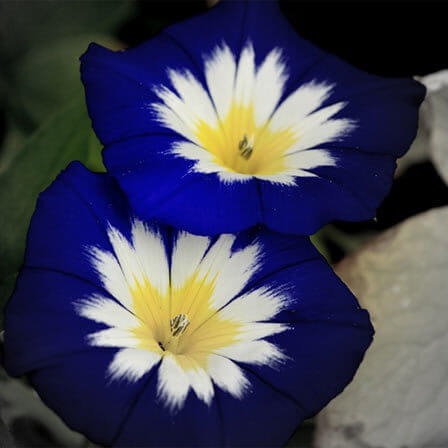
Morning Glories, known for their distinctive saucer shape, bloom in various colors, including a vivid blue.
They are named for their unique blooming pattern, opening at dawn and closing by evening.
Morning Glories are popular in decorative arrangements, especially for weddings and parties, symbolizing love and affection.
Their transient beauty captures the essence of fleeting moments, making them a poignant and beautiful choice for special occasions.
11. Blue Hibiscus Flower
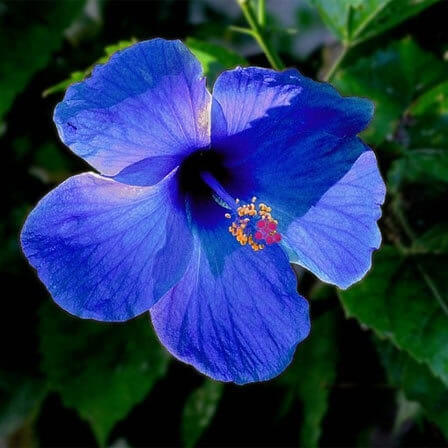
The Blue Hibiscus flower is a rare and exotic beauty, captivating with its unique shape and color.
Standing out for its subtlety and elegance, the blue hibiscus symbolizes serenity, depth, and fertility.
These flowers thrive in alkaline soil, though they are adaptable to acidic conditions with minimal need for extra fertilizer.
Regular watering is key to encouraging plentiful blooming.
The blue hibiscus is a splendid choice for those seeking a touch of rarity and tranquility in their gardens.
12. Impatiens Flower
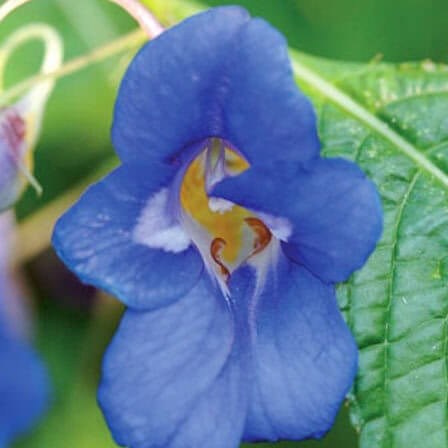
Impatiens, with their diverse varieties, are beloved for their flat orchid-shaped blossoms, including stunning blue shades.
These flowers embody motherly affection and love, making them a heartfelt addition to any garden or bouquet.
Most Impatiens are herbaceous annuals or perennials with succulent stems, ranging in size from a modest five centimeters to an impressive 2.5 meters.
Their leaves are often dentated or serrated, adding to their visual appeal.
Thriving primarily in the Northern Hemisphere and tropical regions, Impatiens are a versatile and vibrant choice for flower enthusiasts.
13. Iris

The Iris stands out with its rich symbolism, representing wisdom, faith, friendship, courage, and hope.
Notably used in medieval Mary Gardens, the Iris, especially in its blue variety, adds a profound depth to any setting.
Its blade-shaped foliage and fluttering petals, reminiscent of butterfly wings, evoke a sense of delicate beauty and resilience.
Irises are predominantly perennials well-suited to dry climates.
Their long, erect stems, which can vary in shape, and cylindrical leaves make them a striking addition to gardens, symbolizing a ‘dancing spirit’ in the early summer.
14. Violet Flower
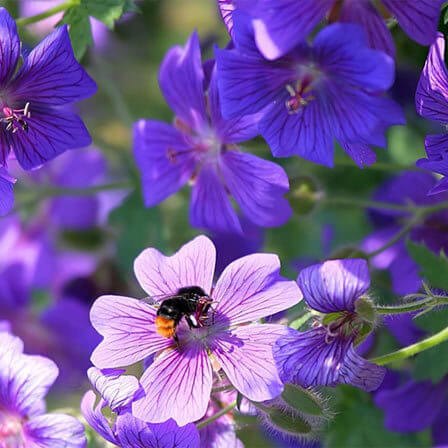
The Violet flower, particularly in its blue variety, is a charming symbol of love, affection, modesty, and happiness.
Not only are these flowers aesthetically pleasing, but they are also edible, often used to enhance desserts and salads with their sweet essence.
Violets come in various forms, including perennials, annuals, and small shrubs.
Ornamentally versatile, they typically feature heart-shaped or reniform leaves, with some varieties boasting linear or palmate leaves.
Widely found across the Northern Hemisphere, these flowers form basal rosettes, adding a delicate and colorful touch to gardens and culinary creations.
15. Gentian
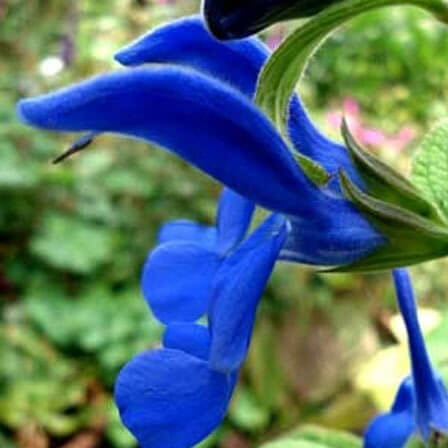
The Gentian flower, admired for its vibrant true-blue color, is a magnet for butterflies and hummingbirds.
Its smooth, green, lance-shaped leaves complement its large, trumpet-shaped blooms.
Found mainly in Europe but also in parts of Asia, America, Eastern Australia, and New Zealand, the blue Gentian is a stunning alternative to more common flowers like roses and daisies.
It symbolizes loveliness and femininity, making it a captivating choice for gardens and floral arrangements.
These plants, which can be annual, biennial, or perennial, add a unique and striking blue to any floral setting.
16. Forget Me Not
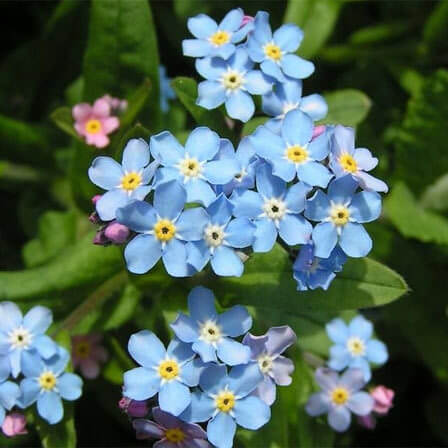
The Forget Me Not flower, with its delicate blue petals and yellow stamens, symbolizes remembrance and true love.
This flower’s legend dates back to the 15th century when it was believed that wearing them would prevent lovers from being forgotten.
Blooming primarily in summer, its small size belies its significant impact.
The name ‘Forget Me Not’ originates from the Greek word ‘Myosotis’, meaning ‘mouse’s ear’, which aptly describes the shape of its leaves.
The German name ‘vergissmichnicht’, translating directly to ‘forget me not’, further reinforces its memorable nature.
17. Bachelor Button Flower
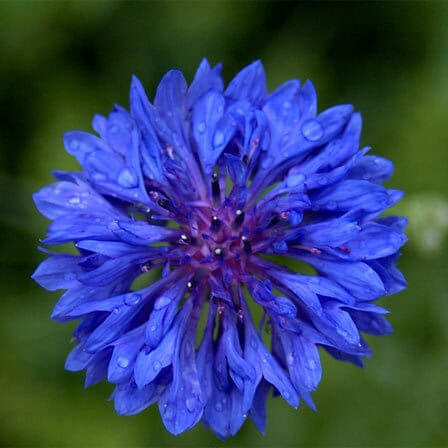
Also known as the basket flower, cornflower, or boutonniere flower, the Bachelor Button is renowned for its striking blue hue.
Historically valued for its pigment, this flower held a special place in courtship rituals; bachelors wore it to signify their love, with the belief that the flower’s quick wilting indicated unrequited feelings.
Serving as Poland’s national flower, the Bachelor Button symbolizes hope in love, the beauty of singlehood, and delicate strength.
Easy to grow from seeds or nursery transplants in spring, this flower takes about three months to sprout and bloom, making it a rewarding addition to any garden.
18. Blue Fringed Daisy
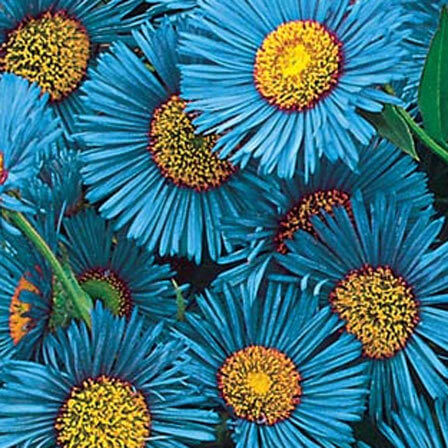
The Blue Fringed Daisy is a delightful twist on the classic daisy, with its unique blue hue and fringe-like petals encircling a yellow-green center.
This flower embodies simplicity, appreciation, and adoration.
Predominantly perennial, it makes a standout addition to any garden, drawing attention with its refined blue-purple petals spiraling around golden centers.
The distinctive appearance and symbolism of the Blue Fringed Daisy make it a cherished choice for gardeners and flower enthusiasts alike.
19. Ipomoea Flower
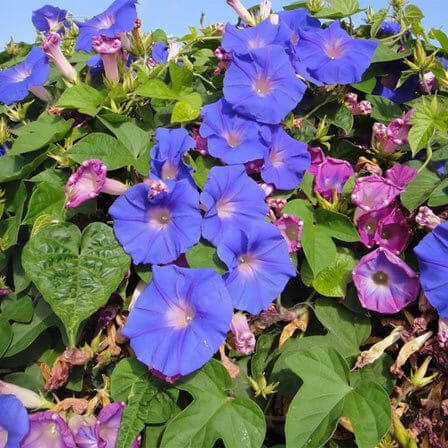
The Ipomoea, or Morning Glory, is renowned for its large trumpet-shaped petals, displaying a deep azure color.
These flowers open at dawn, symbolically greeting each new day.
The bright blue blooms and rich green leaves form a stunning contrast.
Native to regions including the United States, Mexico, Central America, the Caribbean, and South America, Ipomoea flowers grow in impressive clusters on tall stems.
Their vibrant beauty makes them a popular choice for ornamental gardening, adding a splash of color to any landscape.
20. Blue Calla Lilies
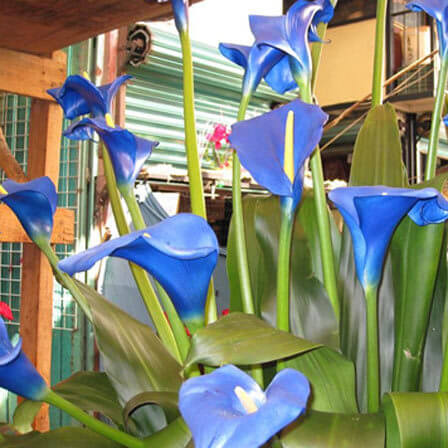
The Blue Calla Lily is a flower of remarkable beauty, often featured in various ceremonies, including funerals, weddings, and parties.
Their unique shape and striking blue hue make them versatile for any occasion, symbolizing serenity, royalty, peace, and tranquility.
Beyond their aesthetic appeal, these flowers also represent love and desire.
While often grown as annuals, Blue Calla Lilies are perennials, offering the potential to enjoy their captivating blooms year after year in a potted form.
21. Blue Orchids
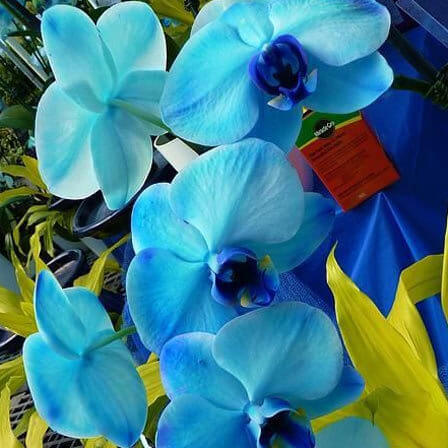
Blue Orchids are a testament to the enchanting beauty and rarity in the world of flowers.
Often symbolizing luxury, beauty, and strength, these flowers captivate with their extraordinary appeal.
The blue orchids, in particular, are rare and a symbol of tranquility, echoing the depths and serenity of the ocean with their white and blue hues.
Representing delicate beauty, stability, and power, they are primarily found in regions like Assam and the Khasi hills.
These orchids’ unique colors and meanings make them highly sought-after by flower enthusiasts and collectors.
22. Blue Carnation
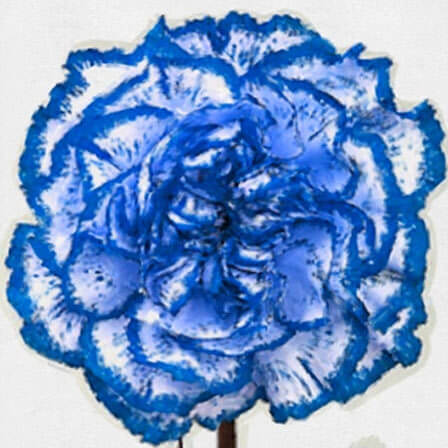
Blue Carnations are enchanting with their vibrant and colorful presence, often chosen for party decorations and special occasions.
These flowers symbolize joy and elegance, making them popular for weddings and gifts.
The light sky-blue shade of Blue Carnations conveys peace and impartiality, often used to represent pure love, especially in wedding ceremonies.
It’s noteworthy that Blue Carnations are not naturally occurring; they result from careful cultivation and have recently gained popularity.
Their stunning blooms and unique color have made them a favorite in the floral world.
23. Columbine
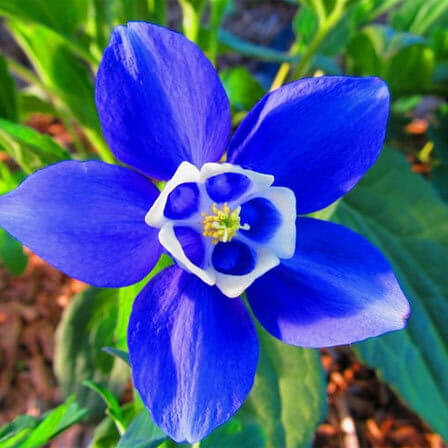
The Columbine, a member of the ranunculaceous family, is notable for its delicate petals and beautifully colored sepals reminiscent of a flock of pigeons.
The name ‘Columbine’ derives from the Latin ‘Aquila,’ meaning ‘dove.’
With dark, bluish-green leaves, these flowers bloom in a stunning blue, among other colors like pink, yellow, red, violet, maroon, and white.
Primarily perennial, Columbines flourish in various environments, including meadows and woodlands, bringing a touch of natural elegance wherever they grow.
24. Anemone
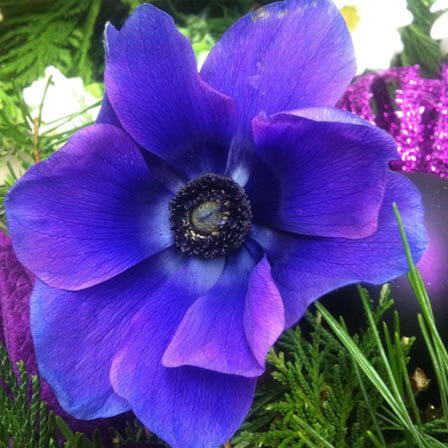
Anemones are known for their bright and vivid colors, including striking shades of blue.
They bloom from spring to fall, adding a splash of color throughout the growing seasons.
In flower symbolism, anemones are believed to bring luck and protection against negative forces, often associated with a sense of magical anticipation.
These herbaceous perennials are native to a wide range of regions, including subarctic areas of North America, Greenland, Europe, Asia, and South America, as well as New Zealand.
Typically growing to 20 cm to 40 cm, anemones are a versatile addition to any garden.
25. Brunner
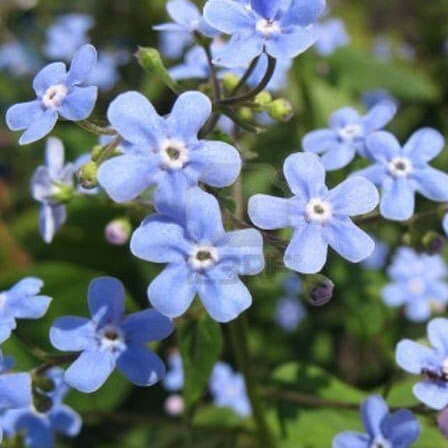
Brunner, also known as Brunnera, is distinguished by its delicate, five-petaled blue flowers.
These blooms appear in early spring, with airy sprays rising above the foliage.
Their resemblance to ‘Forget Me Not’ flowers adds a touch of whimsy.
As a member of the Boraginaceae family, these rhizomatous perennials are native to the woodlands of Eastern Europe and northwest Asia.
The plants are characterized by their hairy leaves, adding a unique texture to the garden landscape.
26. Lupine
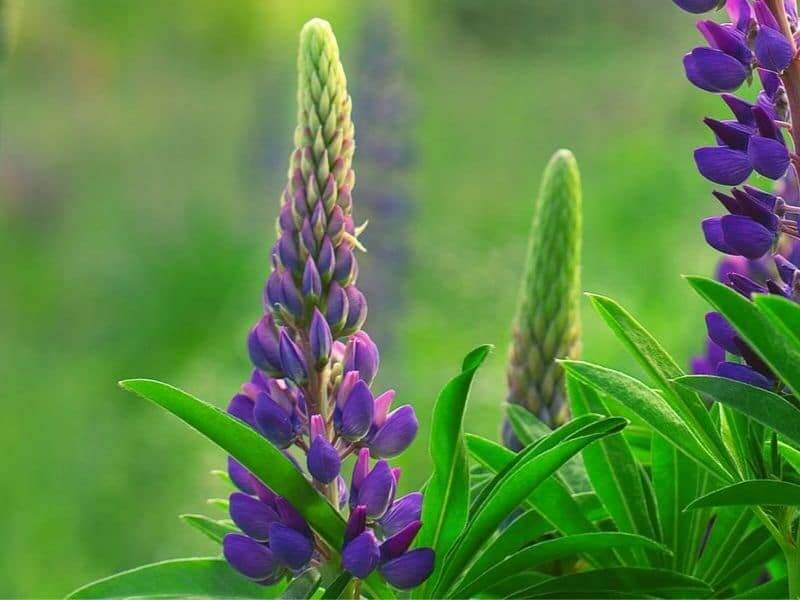
Lupines are known for their tall, majestic flowers, making them ideal for garden landscapes and floral vase arrangements.
These plants favor well-drained soil and full sunlight to flourish.
Interestingly, to encourage strong growth, it’s beneficial to refrigerate lupine seeds wrapped in paper towels for a week, simulating a cool resting period.
As part of the Fabaceae legume family, the Lupine genus encompasses over 199 species, predominantly found across North and South America.
Their striking appearance and growth requirements make them a fascinating addition to any floral collection.
27. Himalayan Blue Poppy
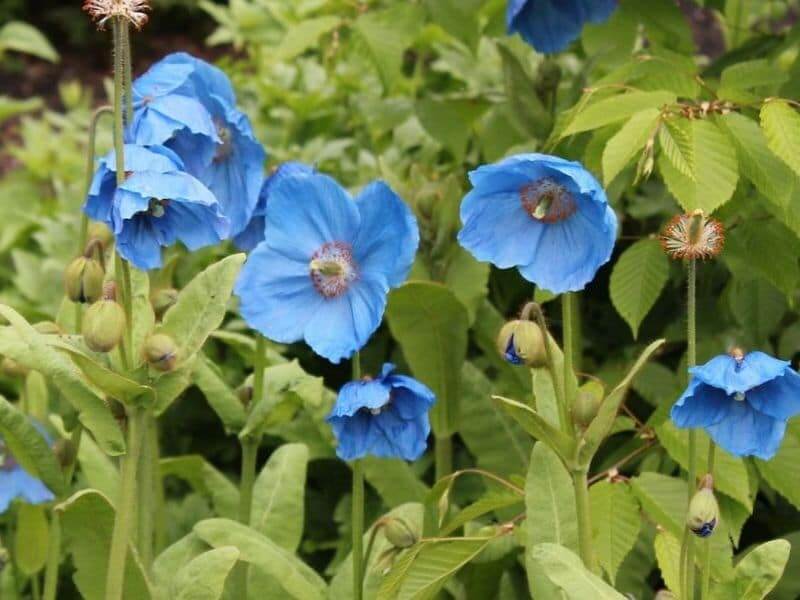
The Himalayan Blue Poppy is a rare gem in the poppy family.
It is primarily known for its stunning blue color, a rarity among poppies usually found in white, yellow, and red.
Growing these flowers can be challenging due to their specific needs for weather, sunlight, and soil conditions.
They are predominantly found in their native Tibet and some regions of the USA.
Cultivating Himalayan Blue Poppies requires mimicking their native environmental conditions, making them a rewarding yet demanding choice for dedicated gardeners seeking unique and eye-catching blooms.
28. Lobelia
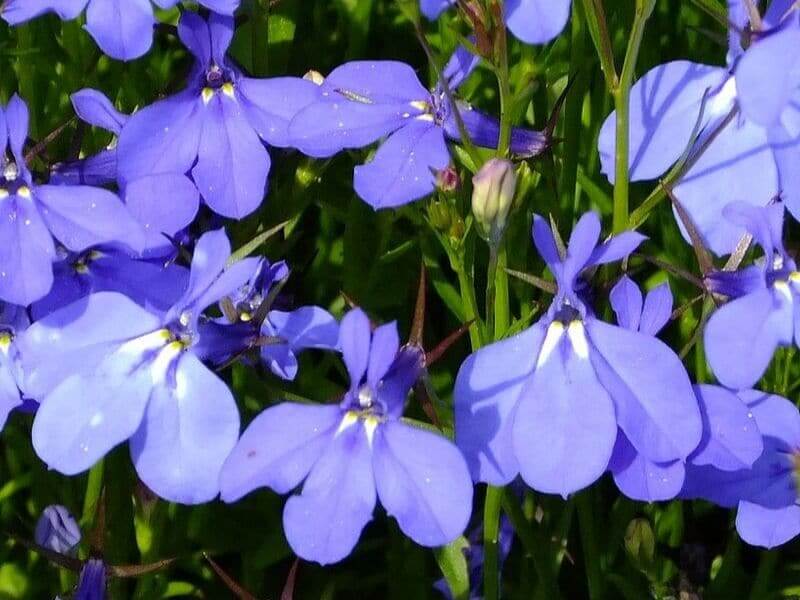
Lobelia is a captivating blue flower known for its ease of cultivation and adaptability.
It thrives in cooler weather and indirect sunlight, making it a versatile addition to garden designs, including hanging baskets.
The vibrant blue hue of Lobelia enhances the beauty of any garden setting.
As an annual herb, it blooms from summer to early autumn until the first frost.
The plant is not particularly demanding regarding soil type, preferring well-drained soil but adaptable to various conditions.
Its ease of planting and growing from seeds or transplants makes Lobelia a favorite among gardeners for adding a touch of blue charm.
29. Lungwort
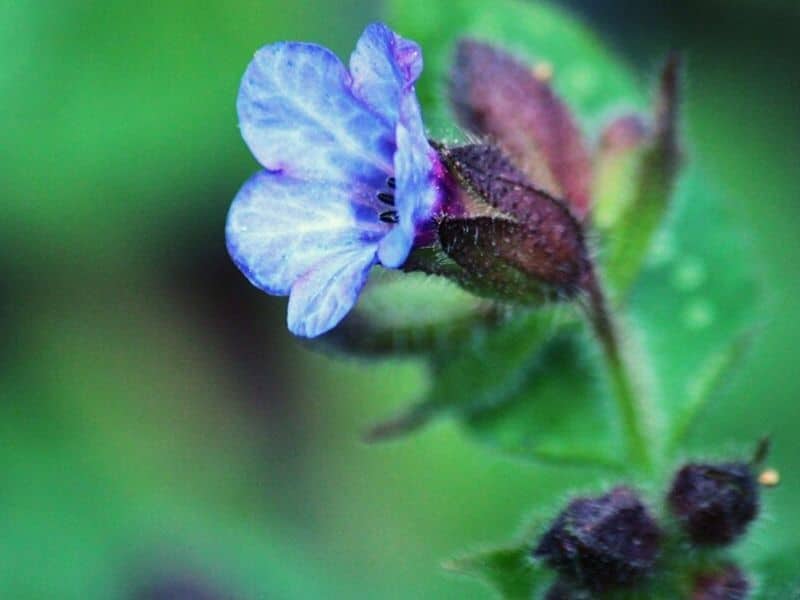
Lungwort is a charming flower, often found in wild forests but equally at home in domestic gardens.
Its pretty blue blooms grow best in well-drained soil.
The name ‘Lungwort’ stems from historical beliefs; herbalists in the past thought its leaves resembled lungs and used them to treat respiratory ailments.
This easy-to-grow plant adds both beauty and a touch of history to your garden, making it a delightful choice for gardeners who appreciate both aesthetics and plant lore.
30. Bird bill Dayflower
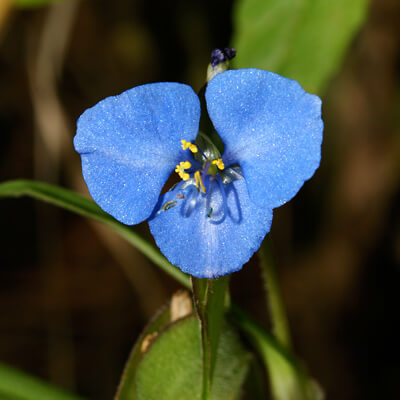
The Bird Bill Dayflower, scientifically known as Commelina dianthifolia, is unique for its fleeting beauty, blooming for a single day.
Each blossom, emerging from a single stem, features three distinctive blue petals.
This ephemeral flower is an excellent choice for container gardening, where it can be paired with longer-lasting plants for a continuous display.
Preferring moist and well-drained soil, the Bird Bill Dayflower adds a transient, yet striking, blue accent to gardens and container arrangements.
Conclusion
This curated list of 30 blue flower names offers a glimpse into the diverse and enchanting world of these rare and beautiful blooms.
Whether you are a seasoned gardener or a flower enthusiast, incorporating some of these blue wonders into your garden can add a touch of elegance and serenity.
Each flower’s unique characteristics and symbolism contribute to the variety of blue flowers.
Embrace the beauty of these blue blossoms and let them inspire tranquility and joy in your gardening adventures.
Which flower did you find the most beautiful? Let us know in the comments.

